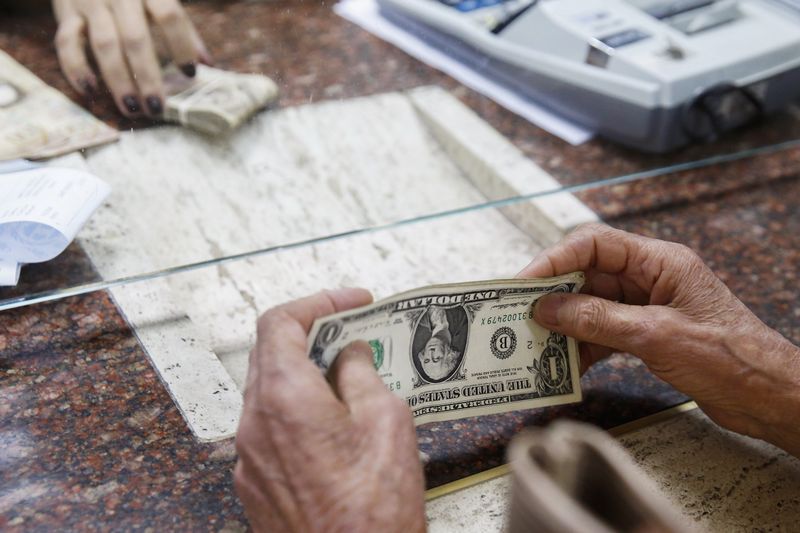Bitcoin price today: gains to $120k, near record high on U.S. regulatory cheer
(Corrects Canadian dollar high to C$1.2268 from C$1.2264,
paragraph 8)
* Graphic: World FX rates https://tmsnrt.rs/2RBWI5E
By Ritvik Carvalho
LONDON, April 30 (Reuters) - The U.S. dollar was on course
to narrowly avoid a fourth straight weekly decline against a
basket of major peers on Friday, as analysts said profit-taking
on dollar short positions was helping lift the currency.
The dollar index =USD was set to end the week flat,
although still down 2.56% for the month as a whole.
Higher 0.2% on the day by midday in London, it had been on
track for a four-week losing streak during Asian trading, which
would have been the longest fall since a six-week slide to the
end of last July.
The monthly loss will be the biggest since July's 4% slump.
"Month-end profit-taking could ultimately lend a hand to the
dollar today to conclude a very difficult April for the dollar,"
said Alexandre Dolci, G10 FX strategist at BBVA.
"Overall we do not expect this trend to have much longer
legs in May, as in our view April's dollar correction could have
instead gone too far, too quick, although we retain a bearish
dollar bias for the long run."
Dolci added that this was particularly true against the
euro, as the euro zone has yet to start closing the gap with the
U.S. on its vaccine rollout, managing the pandemic, and
subsequently the economic recovery.
The Canadian dollar CAD=D3 climbed to a more-than
three-year high of C$1.2268 per greenback on Friday, on track
for a 1.6% weekly gain that would be its biggest since the start
of November.
After the Fed's policy meeting on Wednesday, Chair Jerome
Powell acknowledged the U.S. economy's growth, but said there
was not yet enough evidence of "substantial further progress"
toward recovery to warrant a change to its ultra-loose monetary
settings. That economic growth accelerated in the first quarter,
buoyed by government stimulus cheques, setting the course for
what is expected this year to be the strongest performance in
nearly four decades. Signs that a strengthening economy, particularly in the
labour market, might force the Fed into an earlier tapering of
its asset-purchase programme had pushed the dollar index, or
DXY, to a five-month high at the end of March.
The Fed's dovishness was in marked contrast to the Bank of
Canada, which has already begun to taper its asset purchases.
Canada's commodity-linked loonie got additional support from a
surge in oil to a six-week peak along with higher lumber prices.
Rising commodity prices also supported the Australian dollar
AUD=D3 , which gained 0.2% to $0.77785, climbing back toward a
six-week high of $0.78180 touched Thursday.
"We think the out-performance of pro-cyclical currencies
(those exposed to the global business cycle) should be a core
theme for the rest of the year, despite concerns about higher
U.S. yields," said Chris Turner, global head of markets at ING.
The euro EUR=EBS traded 0.3% lower at $1.2089, near the
two-month high of $1.2150 set the previous session. The shared
currency is up 0.2% for the week and 3.3% for the month.
The yen JPY=EBS , a traditional haven, traded 0.05% higher
at 108.85 per dollar, near the two-week low of 109.22 from
Thursday, setting it up for a loss of about 0.9% for the week.
<^^^^^^^^^^^^^^^^^^^^^^^^^^^^^^^^^^^^^^^^^^^^^^^^^^^^^^^^^^^
World FX rates https://tmsnrt.rs/2RBWI5E
Dollar heads for fourth weekly loss https://tmsnrt.rs/3b8GtJl
^^^^^^^^^^^^^^^^^^^^^^^^^^^^^^^^^^^^^^^^^^^^^^^^^^^^^^^^^^^>
